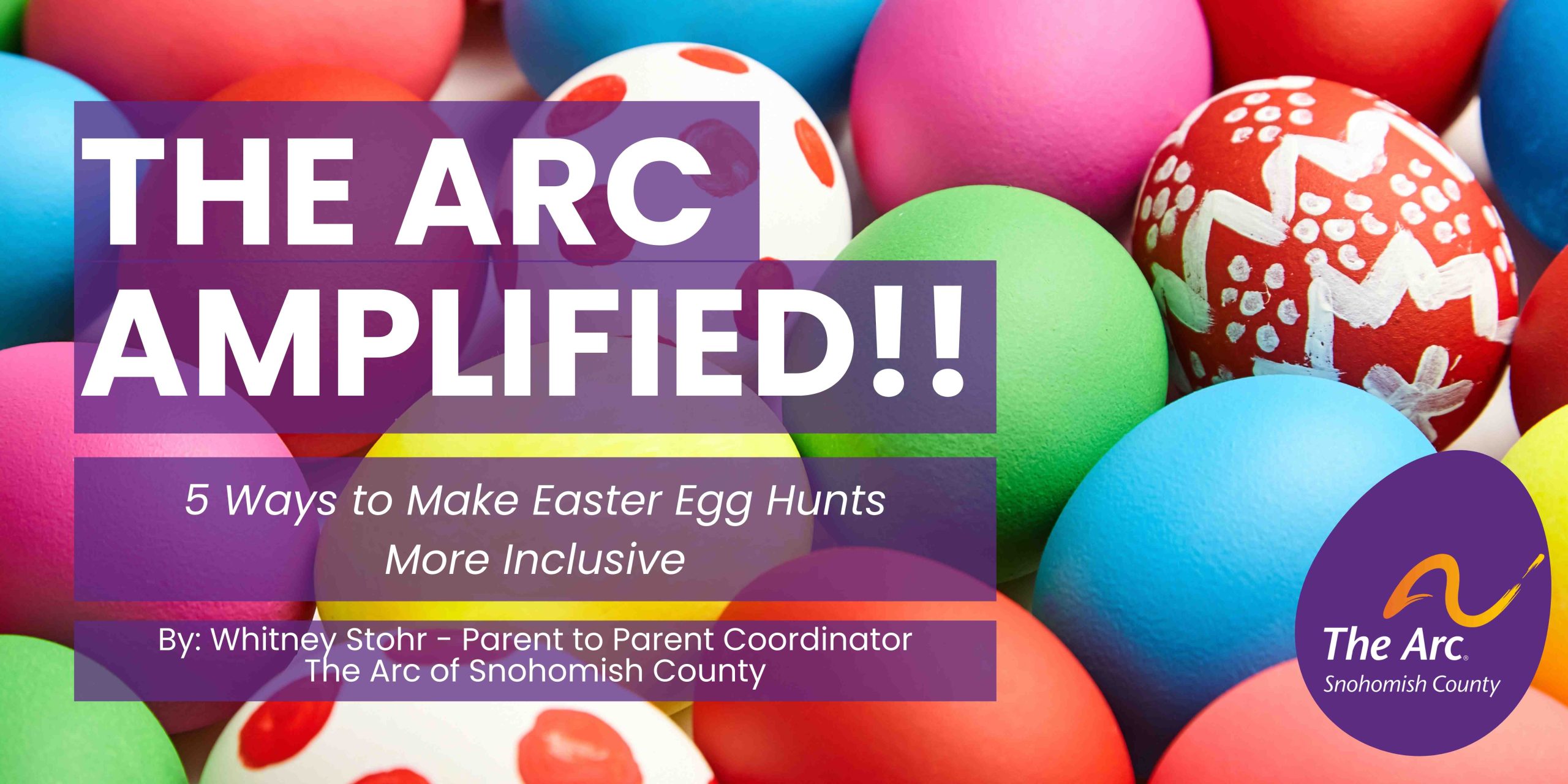
5 Ways to Make Easter Egg Hunts More Inclusive
Each year, as the Easter holiday nears, popular stories and memes make their way around social media, describing ways that organizations or individual families have adapted their annual Easter egg hunts for greater accessibility and inclusion.
It is always fun to see on display the creativity and outside-the-box thinking of family caregivers and those community leaders dedicated to ensuring that everyone has a chance to participate in public events.
Some of these ideas include attaching helium-filled balloons to eggs, so wheelchair users can participate by grasping the strings of the balloons from their seated position. (If you are part of an organization that would like to recreate this idea: Consider using Mylar balloons rather than traditional party balloons as rubber balloons pose a health risk for children with latex allergies.) There have been stories shared about using beeping or light-up eggs to make egg hunts more inclusive for children with low-vision. Additionally, sensory-Friendly egg hunts can support kids and families who prefer calmer environments. (Click here for even more ideas!)
Here are additional steps that organizations can take to make their upcoming Easter egg hunts more inclusive:
1. Utilize a variety of surfacing
When marking the boundaries of your Egg hunt, identify a space that includes a variety of ground surfacing such as ample sidewalk space and areas with solid ground surfacing, in addition to the usual grassy fields. It can be difficult for children who use wheelchairs or other mobility aids to participate in activities that take place in grass or areas with loose ground material like gravel or sand.
2. Hide eggs at varying heights
Children who are wheelchair users will have a difficult time participating in an egg hunt where all the eggs are placed at ground-level. Other children with disabilities, for a variety of reasons, may also find it challenging to reach for such low set items. Instead, identify a location for your Easter egg hunt that allows eggs to be placed at different heights. For example, include a playground area or draw your boundaries to meet the outside walls of an adjacent building, with all it nooks and crannies. (Remember that access to these spaces should also be accessible with ramps, curb-cuts and/or paths made of hard ground surfacing.)
3. Establish adaptive categories for participation
For large egg hunts, dividing participants into traditional age categories can prove problematic. This inevitably places some children with disabilities at a distinct disadvantage as they must contend with various barriers to access between themselves and the eggs they wish to collect. Fun, community activities, like Easter egg hunts, should be designed in a way that creates an equitable opportunity for participation by all involved. Creating a category of adaptive participation, or establishing participation categories based on level of self-selected “competitiveness” can make the event more fun for everyone. For example, participation categories could include: a “Just for Fun” walking-and-rolling category versus a more competitive “Egg Hunts Are My Business” category.
4. Offer non-food prize alternatives
Some children cannot eat by mouth and others cannot eat certain types of food items, which may include your traditional marshmallow bunnies and Cadbury eggs. It is always a good idea to offer non-food prize items at public events. Luckily, there are many options that fit perfectly inside of plastic eggs. Items to consider: stickers, temporary tattoos, small stamps, small figurines or finger puppets. (Click here for a list of “40 Egg-cellent, Non-candy Easter Egg Fillers”)
5. Provide ample seating for both participants and their family members
Providing quality seating (and enough of it!) at public events is an important consideration for accessibility and inclusion. Parents and grandparents love to cheer their little ones on as they go on the hunt to fill their basket with Easter eggs. To accommodate the needs of all participants, identify a space that offers built-in seating, such as park benches and ADA-Compliant picnic tables, or consider how additional seating can be provided. Such accommodations support the needs of children who require time to sit and rest after the exertion of physical activity, as well as other family members with disabilities or individuals who require restful spaces.
Here is wishing all who celebrate a very Happy Easter and a successful egg hunting season! May the bunny be always on your side!
**********
Whitney Stohr is a Parent to Parent Coordinator at The Arc of Snohomish County. She is passionate about advocating for medically complex children and children with disabilities and their families. She is a mom and medical caregiver herself, who is energized by working closely with other parent/family caregivers. She lives with her four-year-old son Malachi and husband Jason in Lynnwood. Connect with her on Instagram @rollin.w.spinabifida. Contact: whitney@arcsno.org.

